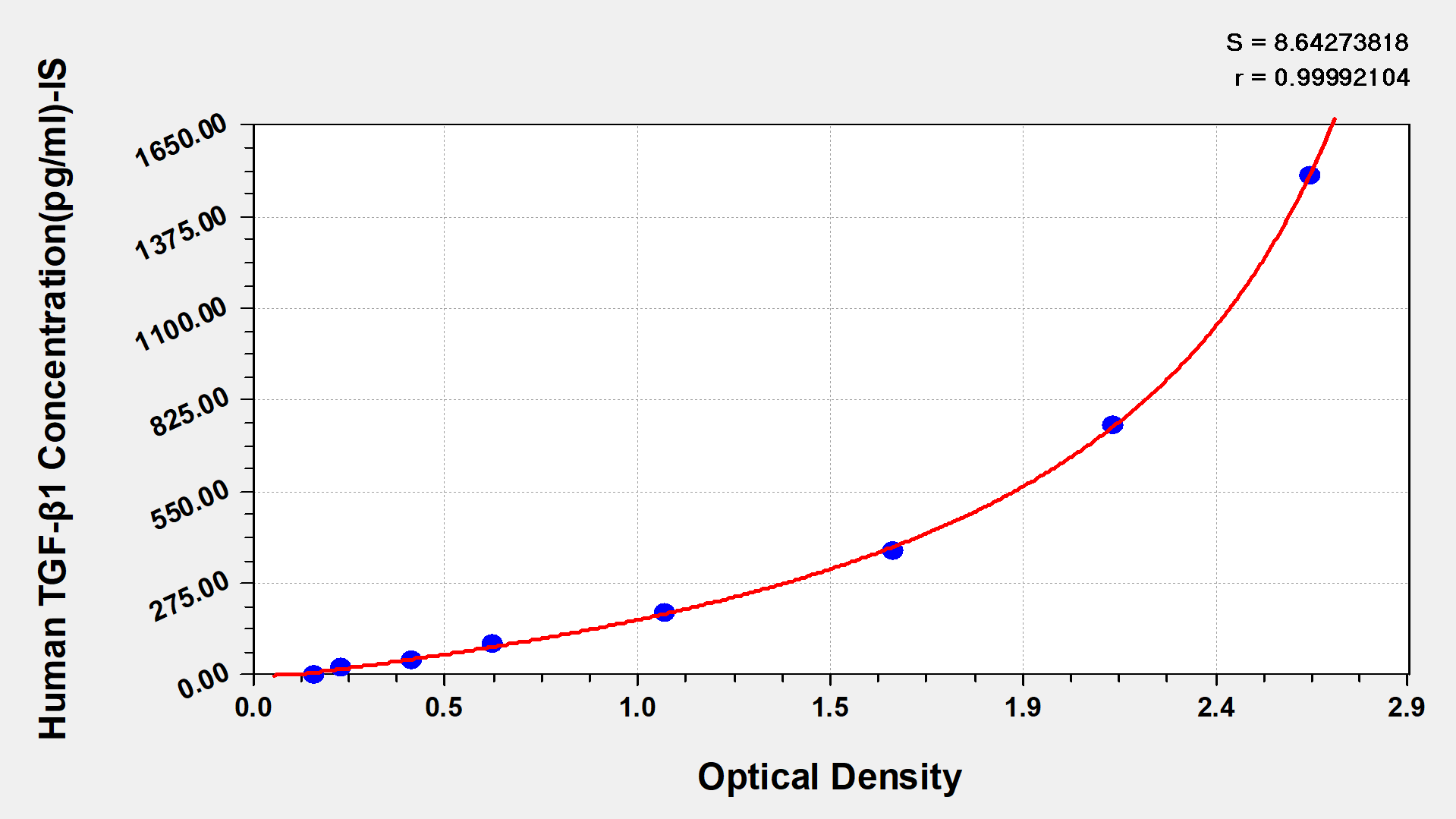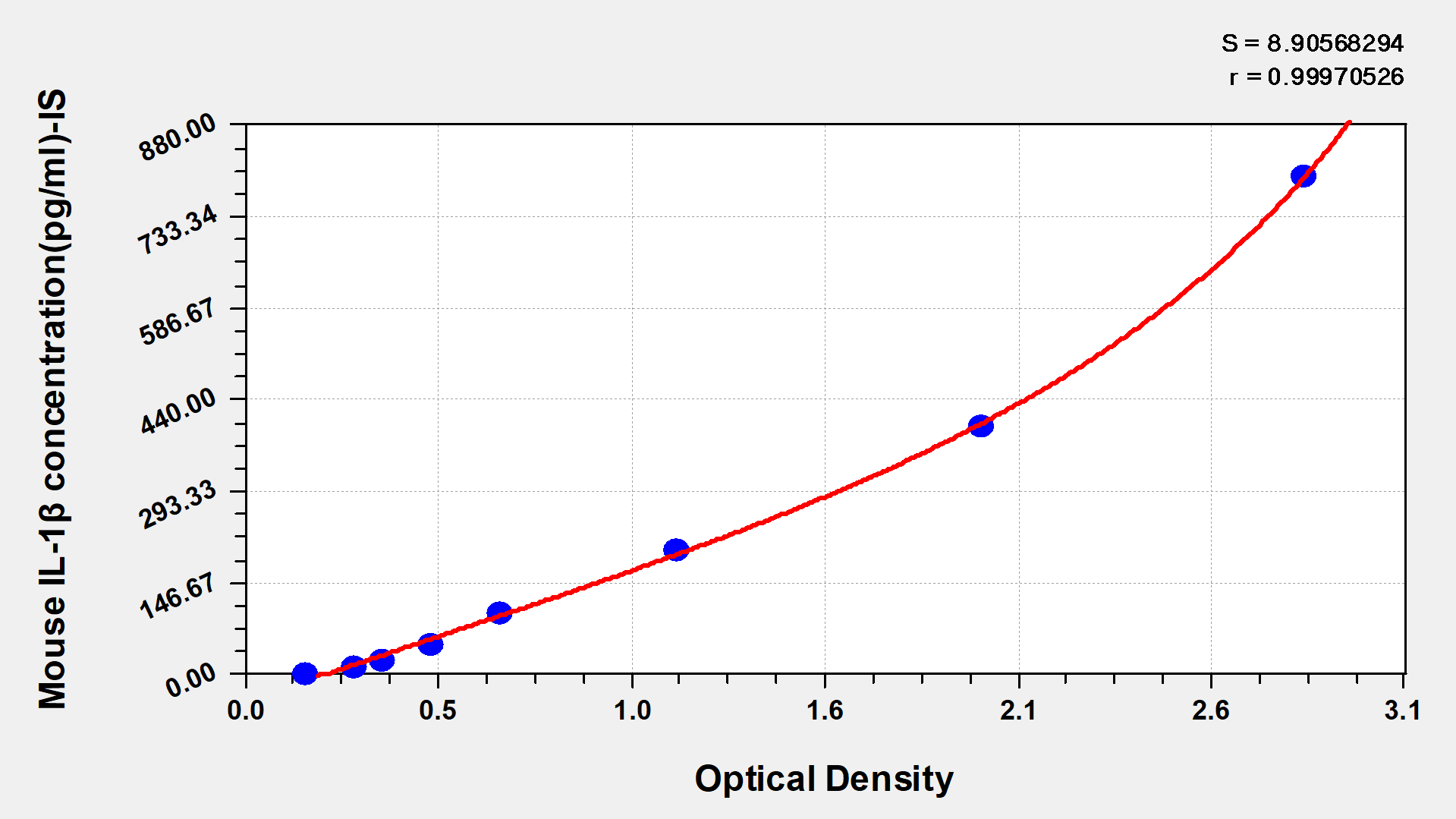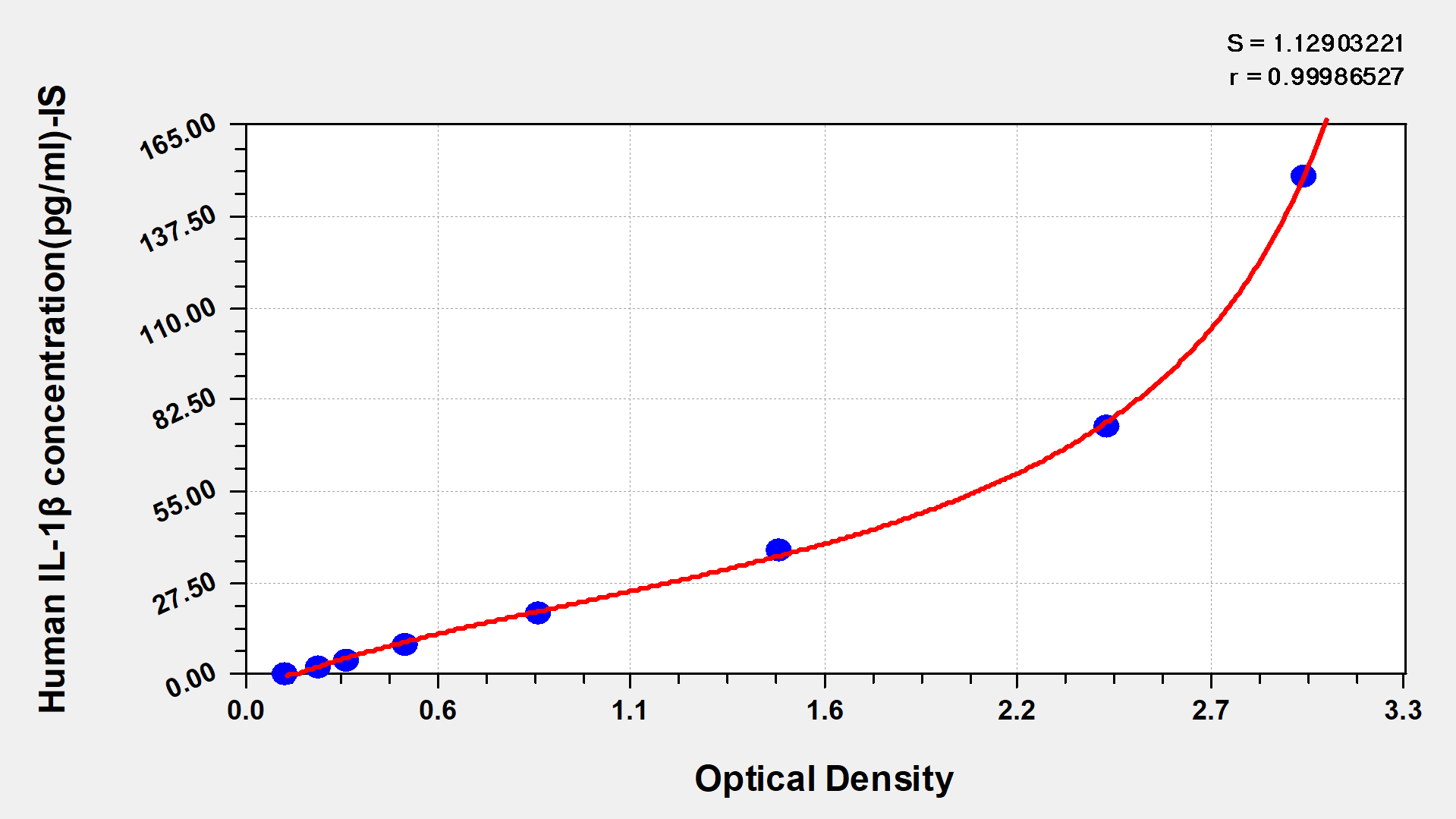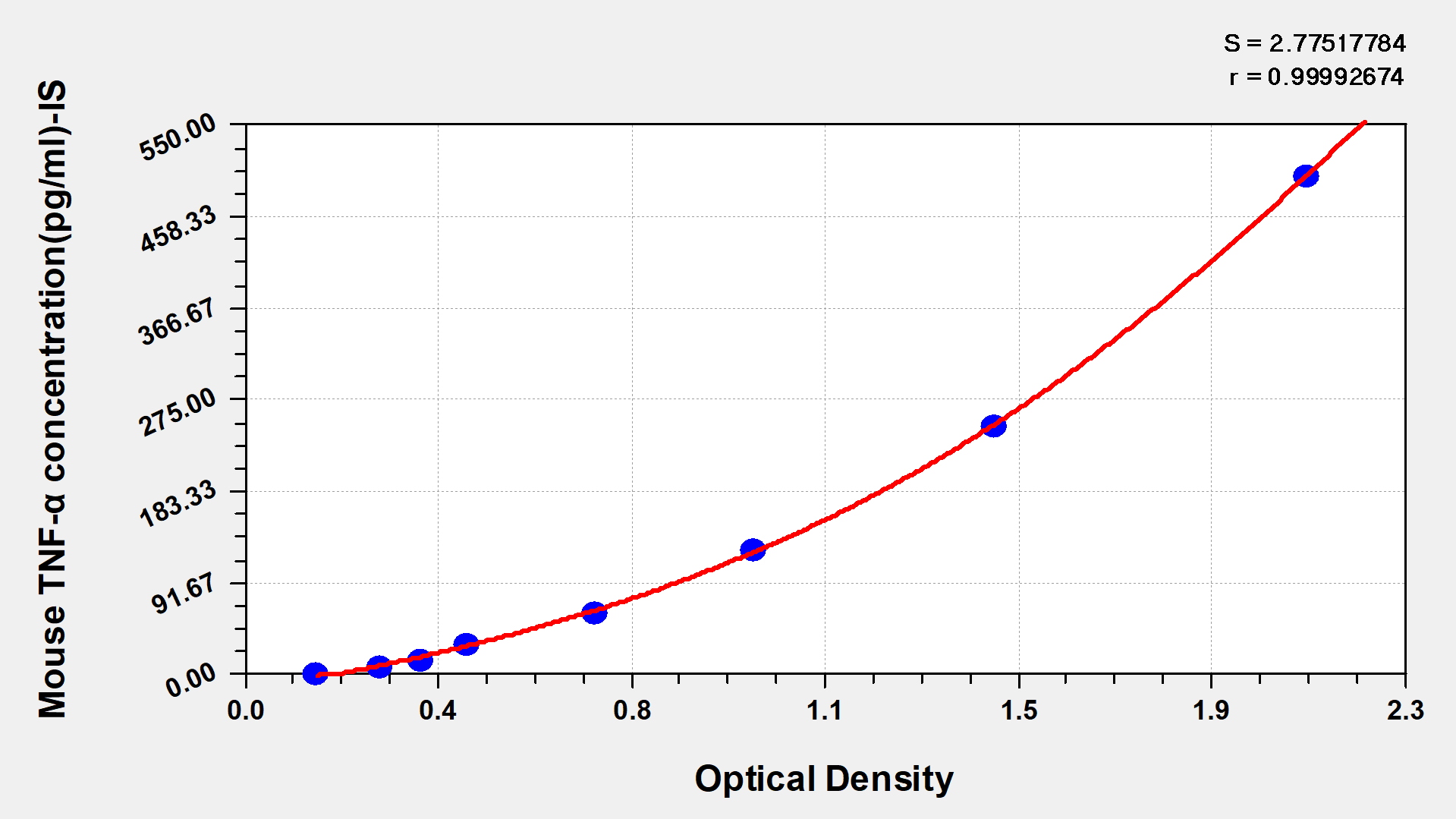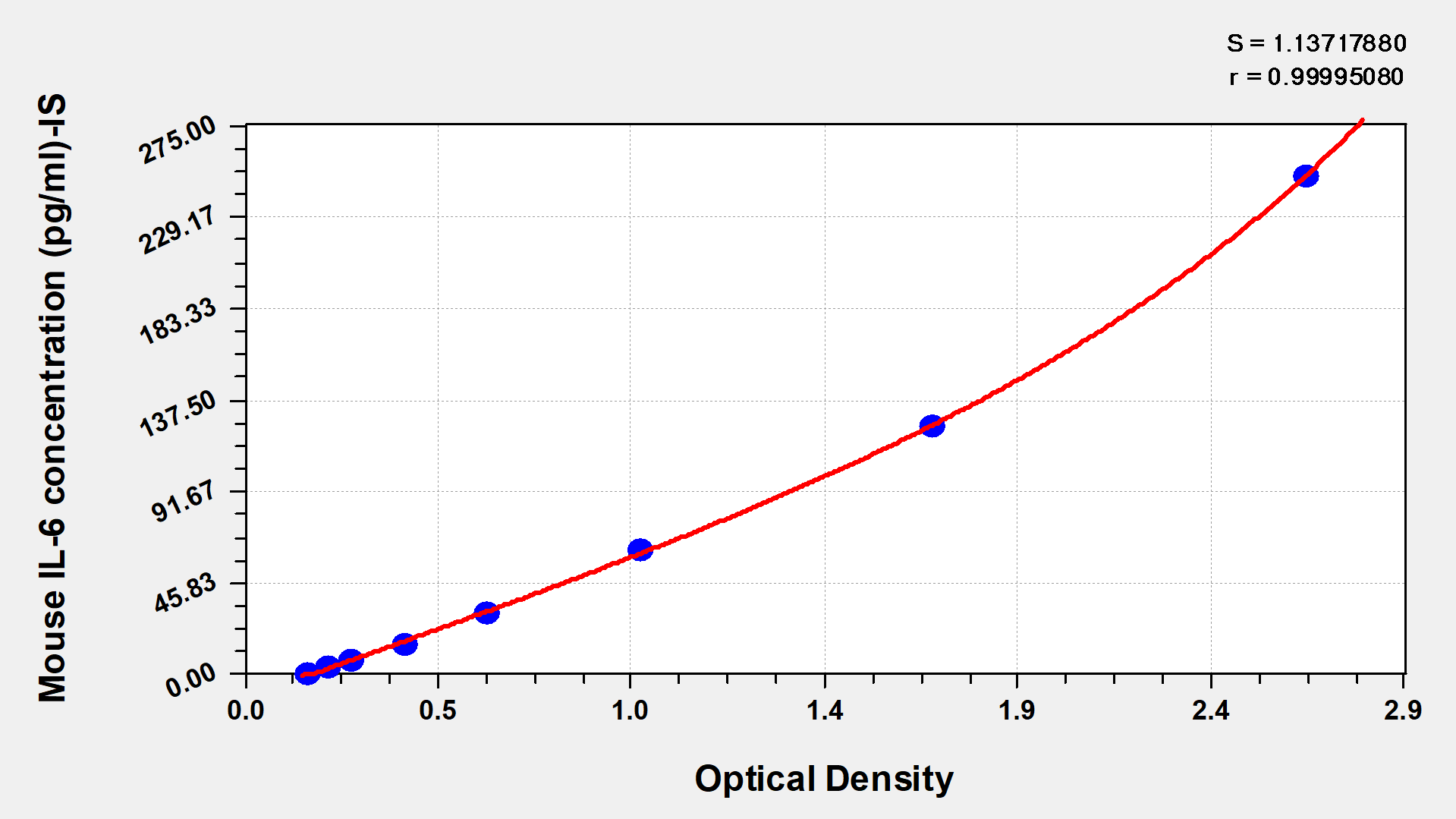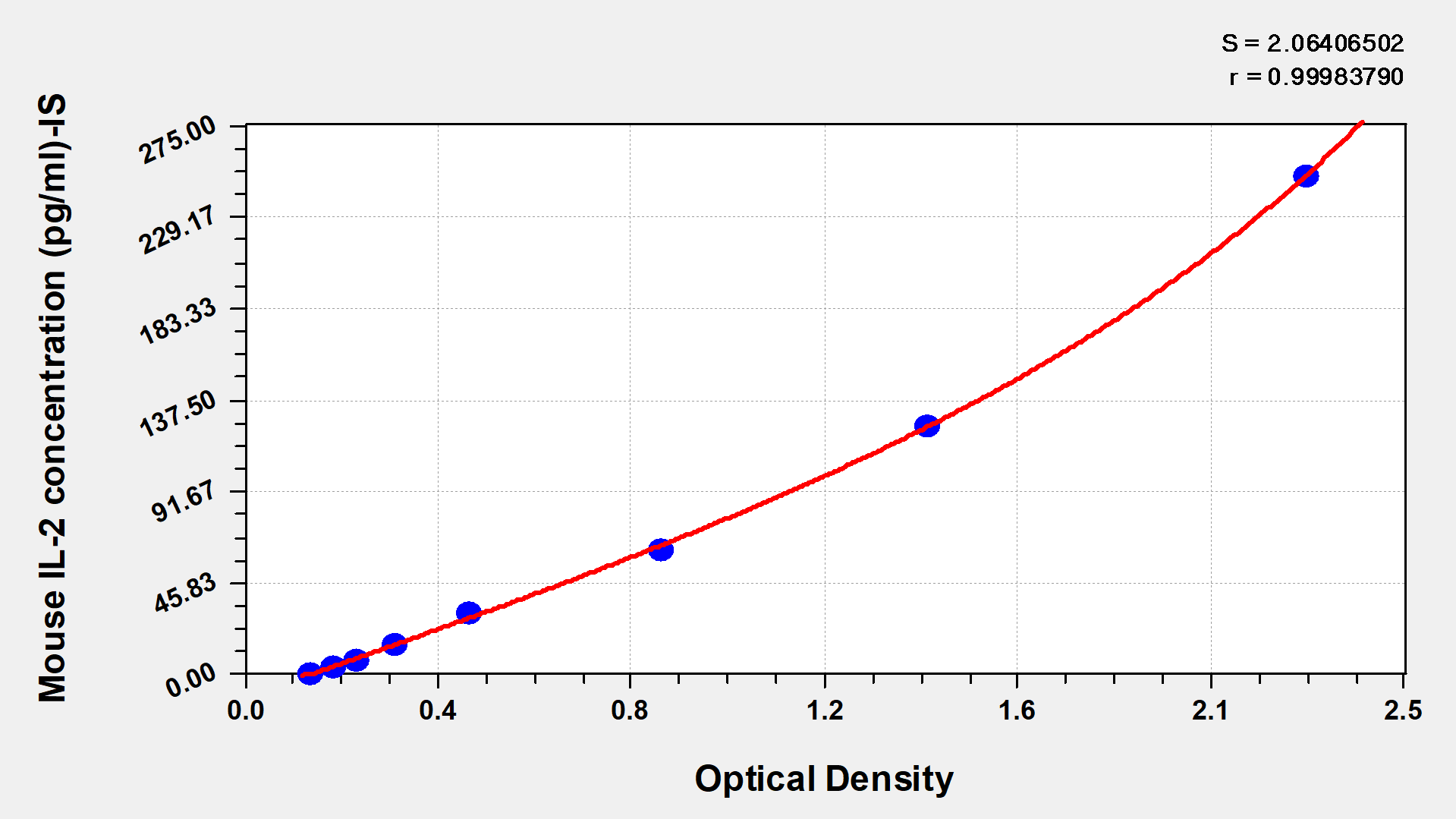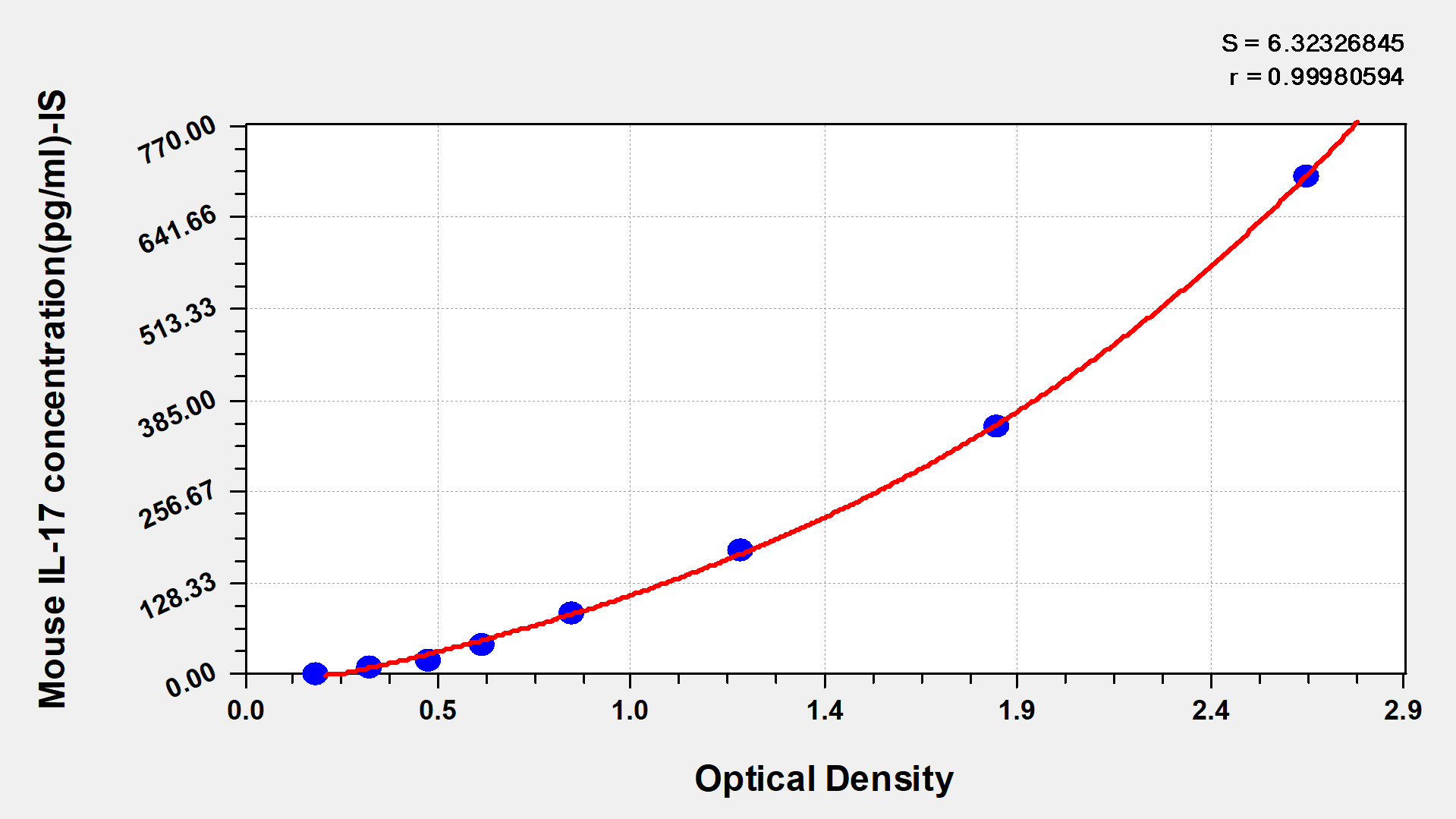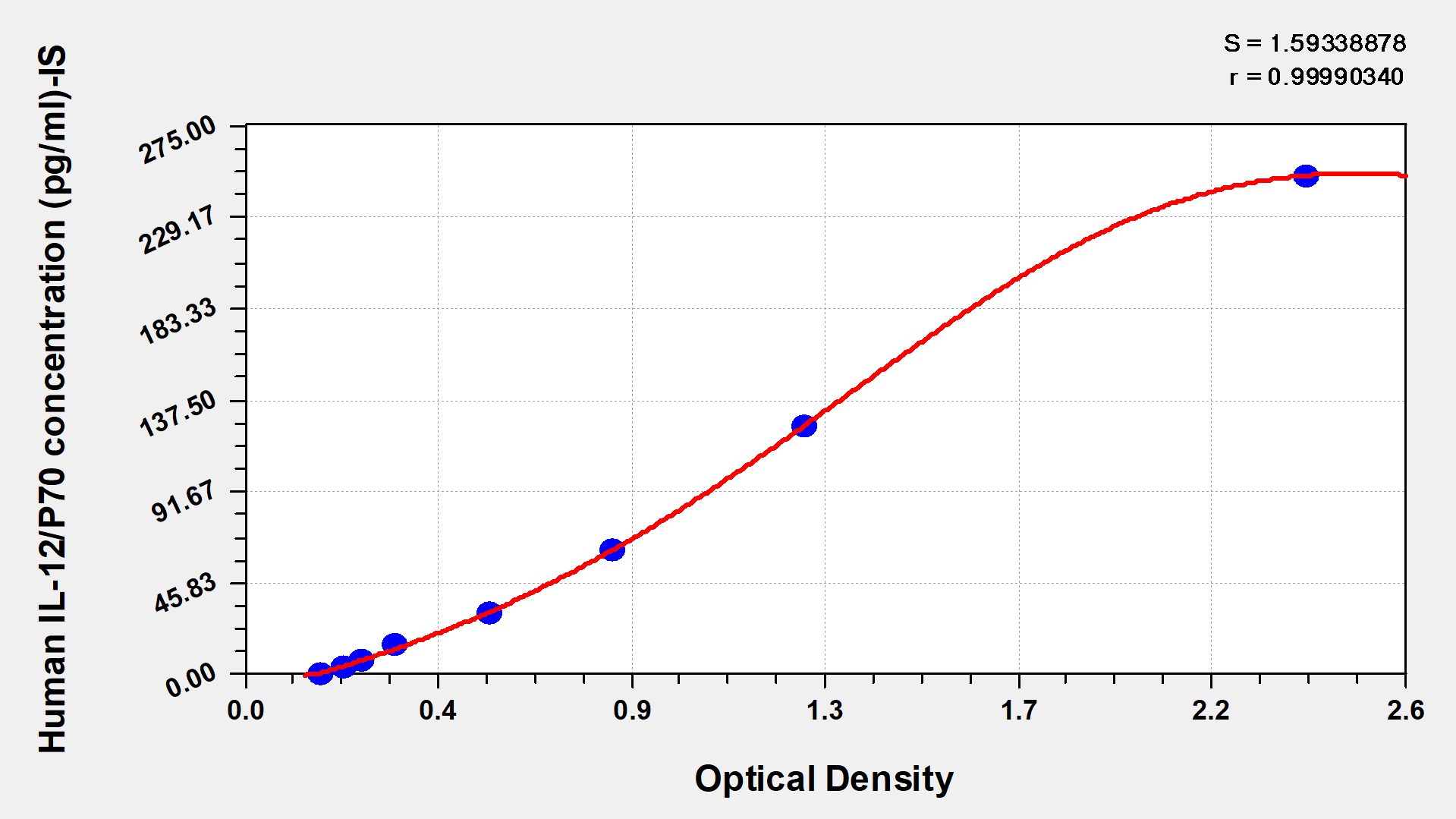Human Kunitz-type protease inhibitor 1(SPINT1) ELISA kit
-
中文名稱:人Kunitz型蛋白酶抑制劑1(SPINT1)酶聯免疫試劑盒
-
貨號:CSB-EL022584HU
-
規格:96T/48T
-
價格:¥3600/¥2500
-
其他:
產品詳情
-
產品描述:人Kunitz型蛋白酶抑制劑1(SPINT1)酶聯免疫試劑盒(CSB-EL022584HU)為雙抗夾心法ELISA試劑盒,定量檢測血清、血漿、組織勻漿樣本中的SPINT1含量。SPINT1 是一個重要靶點。它在機體生理過程等方面有一定作用。研究上聚焦其基因表達調控、蛋白質功能機制等。通過研究它與疾病發生發展的關聯,如腫瘤進展等,為開發針對性治療策略、尋找新型藥物靶點提供理論依據。試劑盒檢測范圍為0.625 ng/mL-40 ng/mL,靈敏度為0.156 ng/mL。適用于細胞分子生物學研究、疾病機制探索或藥物開發等科研場景中批量樣本的蛋白表達水平檢測;滿足科研實驗室對多種樣本類型的高通量分析需求本品僅用于科研,不用于臨床診斷,產品具體參數及操作步驟詳見產品說明書。
-
別名:HAI 1 ELISA Kit; HAI ELISA Kit; HAI-1 ELISA Kit; HAI1 ELISA Kit; Hepatocyte growth factor activator inhibitor type 1 ELISA Kit; Kunitz type protease inhibitor 1 ELISA Kit; Kunitz-type protease inhibitor 1 ELISA Kit; MANSC2 ELISA Kit; Serine peptidase inhibitor Kunitz type 1 ELISA Kit; SPINT1 ELISA Kit; SPIT1_HUMAN ELISA Kit
-
縮寫:
-
Uniprot No.:
-
種屬:Homo sapiens (Human)
-
樣本類型:serum, plasma, tissue homogenates
-
檢測范圍:0.625 ng/mL-40 ng/mL
-
靈敏度:0.156 ng/mL
-
反應時間:1-5h
-
樣本體積:50-100ul
-
檢測波長:450 nm
-
研究領域:Cell Biology
-
測定原理:quantitative
-
測定方法:Sandwich
-
精密度:
Intra-assay Precision (Precision within an assay): CV%<8%
Three samples of known concentration were tested twenty times on one plate to assess.
Inter-assay Precision (Precision between assays): CV%<10%
Three samples of known concentration were tested in twenty assays to assess.
Intra-Assay Precision
Inter-Assay Precision
Sample
1
2
3
1
2
3
n
20
20
20
20
20
20
Mean(ng/ml)
4.835
4.93
5.026
4.944
4.794
4.74
SD
0.031
0.033
0.028
0.042
0.036
0.043
CV(%)
4.890
5.148
4.321
6.542
5.705
6.858
-
線性度:
To assess the linearity of the assay, samples were spiked with high concentrations of human SPINT1 in various matrices and diluted with the Sample Diluent to produce samples with values within the dynamic range of the assay.
Sample
Serum(n=4)
1:1
Average %
95
Range %
85-103
1:2
Average %
95
Range %
85-100
1:4
Average %
90
Range %
85-97
1:8
Average %
95
Range %
81-102
-
回收率:
The recovery of human SPINT1 spiked to levels throughout the range of the assay in various matrices was evaluated. Samples were diluted prior to assay as directed in the Sample Preparation section.
Sample Type
Average % Recovery
Range
Serum (n=5)
96
90-110
EDTA plasma (n=4)
97
87-100
-
標準曲線:
These standard curves are provided for demonstration only. A standard curve should be generated for each set of samples assayed.
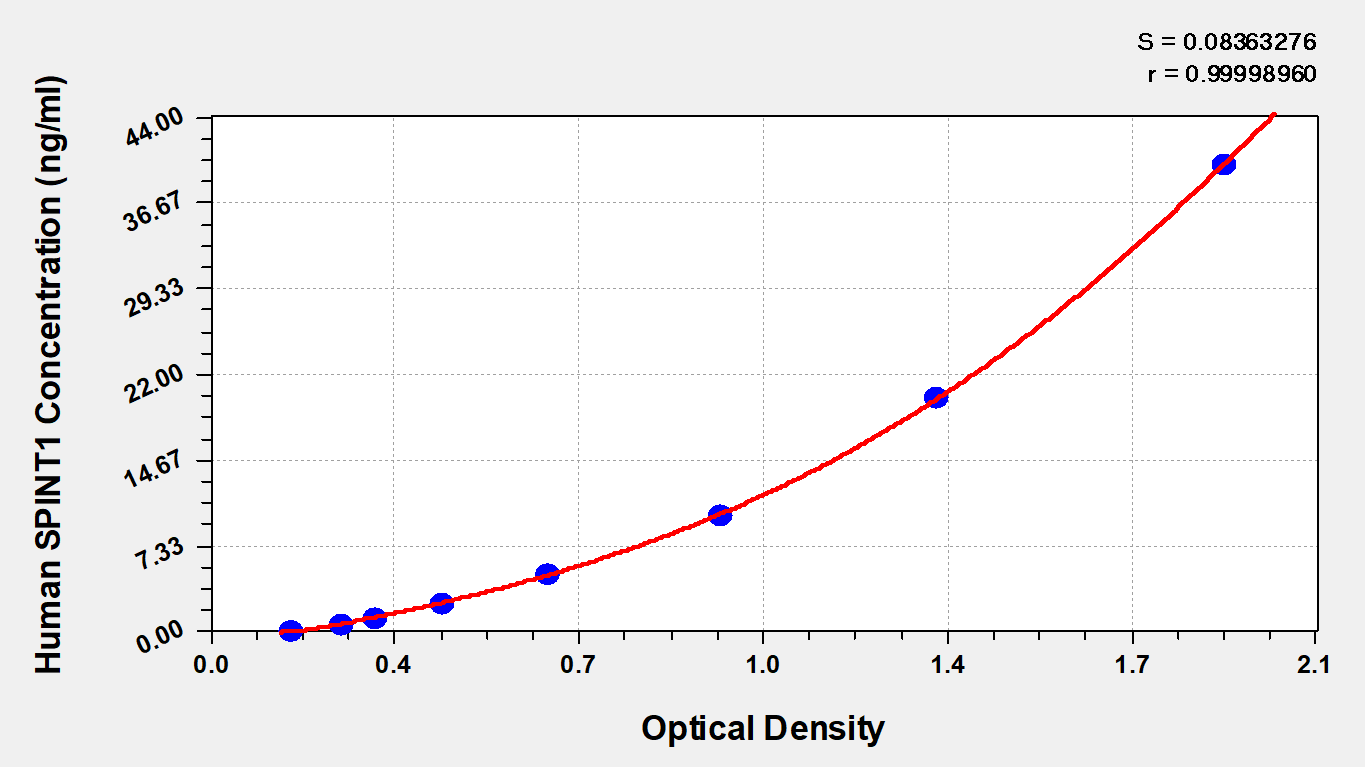
ng/ml
OD1
OD2
Average
Corrected
40
1.885
1.874
1.880
1.717
20
1.342
1.365
1.354
1.191
10
0.948
0.958
0.953
0.790
5
0.643
0.632
0.638
0.475
2.5
0.439
0.443
0.441
0.278
1.25
0.324
0.315
0.320
0.157
0.625
0.251
0.259
0.255
0.092
0
0.165
0.161
0.163
-
數據處理:
-
貨期:3-5 working days
相關產品
靶點詳情
-
功能:Inhibitor of HGF activator. Also acts as an inhibitor of matriptase (ST14).
-
基因功能參考文獻:
- The SPINT1 expression was associated with extrathyroidal invasion, lymphovascular invasion, lymph node metastasis, advanced TNM stage, and a higher risk of recurrence in differentiated thyroid cancer. PMID: 29532159
- HAI-1 is upregulated in pancreatic intraepithelial neoplasia and broadly expressed in pancreatic ductal adenocarcinoma (PDAC) cells. However, PDAC cases having areas of reduced HAI-1 immunoreactivity may show shorter disease-free survival. PMID: 29202869
- In this work, KLK14 binding to either hepatocyte growth factor activator inhibitor type-1 (HAI-1) or type-2 (HAI-2) was essayed using homology modeling, molecular dynamic simulations and free-energy calculations through MM/PBSA and MM/GBSA. KLK14 was successfully modeled. PMID: 28817220
- the cell surface expression of HAI-1 in all viable epidermal layers renders it an effective regulator for matriptase and prostasin PMID: 29438412
- Data suggest that HAI1, a protease on the surface of colon carcinoma cells, is an MMP7 substrate; proteolysis by MMP7 releases extracellular region as soluble HAI1 (sHAI1); sHAI1 induces cancer cell aggregation; cholesterol sulfate is required for MMP-7--catalyzed generation of sHAI1. (HAI1 = hepatocyte growth factor activator inhibitor type 1; MMP7 = matrix metalloproteinase-7) PMID: 29046355
- Concomitant presence of TMPRSS13 with HAI-1 mediates phosphorylation of residues in the intracellular domain of the protease, and it coincides with efficient transport of the protease to the cell surface and its subsequent shedding. PMID: 28710277
- our data illustrated a novel pathway comprising miR-221and miR-222 and hepatocyte growth factor activator inhibitor type 1 in gastric cancer, which is a potential target for future clinical use PMID: 28618968
- DNA methylation levels in the COASY and SPINT1 promoter regions were considered to potentially be a convenient and useful biomarker for diagnosis of Alzheimer's Disease and Amnestic Mild Cognitive Impairment. PMID: 27992572
- The structural insights gained here improve our understanding of the regulation of HAI-1 inhibitory activities and point to new approaches for better controlling these activities. PMID: 28348076
- The present study demonstrated that ovarian cancer cell metastasis and invasion were more dependent on upregulation of matriptase levels than downregulation of HAI1. Matriptase may be a potential adjuvant therapeutic target for inhibiting ovarian cancer invasion and metastasis. PMID: 27356668
- provide new insight into the interplay between tertiary structure and the inhibitory activity of a multidomain protease inhibitor PMID: 27226587
- The findings suggest that the oncogenic activity of hepsin arises not only from elevated expression level but also from depletion of HAI-1, events which together trigger gain-of-function activity impacting HGF/MET signalling and epithelial cohesion PMID: 26165838
- it was found that the recombinant fusion protein uPA17-34-KPI (kunitz-type protease inhibitor ) inhibited the invasion and metastasis of ovarian tumors PMID: 26166362
- HAI-1 may have a critical role in maintaining normal keratinocyte morphology through regulation of PAR-2-dependent p38 mitogen-activated protein kinase signaling. PMID: 25842366
- the anti-migratory effects seen via gamma-catenin were driven by the expression of hepatocyte growth factor activator inhibitor Type I (HAI-1 or SPINT-1), an upstream inhibitor of the c-MET signaling pathway. PMID: 25925948
- Data suggest HAI1 exhibits structural features consistent with classification in MANEC subclass of PAN/apple domain family with unifying features such as two additional disulfide bonds, two extended loop regions, and additional alpha-helical elements. PMID: 25510835
- Matriptase activity was suppressed by the expression of HAI-1. PMID: 24147538
- The results of the present study identified HAI-1 as a favorable prognostic marker for prostate cancer and may indicate that HAI-1 could be a therapeutic target for the treatment of this malignancy. PMID: 24659667
- HAI-1 expression correlates with the differentiation status of colorectal epithelia and could serve as a differentiation marker. PMID: 23979832
- HAI-1 and HAI-2 influence proliferation and cell fate of NPCs and their expression levels are linked to BMP sign PMID: 23409135
- Crystal structures of matriptase in complex with its inhibitor hepatocyte growth factor activator inhibitor-1 PMID: 23443661
- It is suggested that HAI-1 may play an important role in the pathogenesis of castration-resistant prostate cancer PMID: 23393351
- These results suggest that HAI-1 functions as a physiological regulator of HAT by inhibiting its protease activity and proteolytic activation in airway epithelium.(HAI-1) PMID: 22023801
- we showed for the first time that MT1-MMP activates matriptase through the cleavage of HAI-1 PMID: 22118498
- These data suggest that matriptase activity can be rapidly inhibited by HAI-1 and other HAI-1-like protease inhibitors and "locked" in an inactive autoactivation intermediate, all of which places matriptase under very tight control. PMID: 22031598
- HAI-1 and -2 are overexpressed in the liver in cholangiopathies with ductular reactions and are possibly involved in liver fibrosis and hepatic differentiation. PMID: 21898507
- The data suggested that normal epithelial cells use a dual mechanism involving hepatocyte growth factor activator inhibitor-1 and antithrombin to control matriptase and that the antithrombin-based mechanism is lost in the majority of carcinomas. PMID: 21795523
- Low HAI-1 is associated with endometrial cancer. PMID: 20715109
- High-level expression of HAI-1 is retained in the epidermal granular layer. This pattern of expression is retained in most skin disorders. PMID: 21123732
- Expression of HAI-1 in hepatocellular carcinoma is associated with poor prognosis. HAI-1 may be important in neoplasm progression and a new prognostic factor for hepatocellular carcinoma. PMID: 20213201
- HAI-1 regulates pulmonary metastasis of the human pancreatic carcinoma cell line SUIT-2 PMID: 21166957
- results suggest that TMPRSS13 functions as an HGF-converting protease, the activity of which may be regulated by HAI-1 PMID: 20977675
- the matriptase-prostasin proteolytic cascade is tightly regulated by two mechanisms: 1) prostasin activation temporally coupled to matriptase autoactivation and 2) HAI-1 rapidly inhibiting not only active matriptase but also active prostasin PMID: 20696767
- Data suggest that over-expression of HAI-1 in SW620 cells has weak effect on cell growth in vitro, but can significantly inhibit cell migration/motility. PMID: 16044910
- hepatocyte growth factor activator inhibitor-1B (new isoform) has roles in various physiological and pathological processes PMID: 12815039
- 1 serine protease inhibitor genotype is a significant risk factor for chronic obstructive pulmonary disease. PMID: 15994391
- HAI-1B is a potential physiological regulator of prostasin function PMID: 16103126
- The expressions of SNC19/matriptase and its inhibitor HAI-1 are decreased in gastrointestinal cancer tissues PMID: 16273651
- results show that dysregulation of the matriptase/HAI-1 mRNA ratio occurs early during colorectal cancer carcinogenesis PMID: 16820046
- Addition of HAI1 blocked the proteolytic activation of STP14 at the cell surface of peritoneal macrophages. PMID: 17389401
- Prostate cancer cells, after loss of HAI-1, had a significantly increased in vitro invasiveness together with an increase in cellular motility. PMID: 17786295
- analysis of the regulation of matriptase and HAI-1 with an emphasis on the molecular mechanisms governing its zymogen activation, inhibition by HAI-1, and ectodomain shedding [review] PMID: 17981575
- Unlike HAI-1 and matriptase, HAI-2 expression is detected in non-epithelial cells of brain and lymph nodes, suggesting that HAI-2 may also be involved in inhibition of serine proteases other than matriptase PMID: 18713750
- tissue microenvironment regulates the cell surface expression of HAI-1, and thereby may regulate proteolysis and processing of bioactive molecules on the cellular surface PMID: 18769935
- HAI-1 expression levels were significantly higher in all proliferative prostate diseases and seems to be a marker of prostate epithelial cell proliferation PMID: 18813126
- HAI-1 and HAI-2 may possibly be therapeutic target for treatment approaches in ovarian cancer. PMID: 19148468
- Expression of hepatocyte growth factor activator inhibitor type 1 in bronchial epithelial cells are altered by tissue injury to bronchi. PMID: 19222607
- interactions between HAI-1/SPINT1 and membrane-bound serine proteinases contribute to transcriptional and functional changes involved in EMT in certain carcinoma cells. PMID: 19223533
- Data suggest that the cellular location of matriptase activation and inhibition, and the secretory route for matriptase-HAI-1 complex may vary along with the functional divergence of different epithelial cells. PMID: 19535514
- The disease-free and overall survival rates of patients exhibiting high HAI-1 expression were significantly higher than those of patients exhibiting low HAI-1 expression in cervix cancer. PMID: 19578736
顯示更多
收起更多
-
亞細胞定位:Secreted.
-
數據庫鏈接:
Most popular with customers
-
Human Transforming Growth factor β1,TGF-β1 ELISA kit
Detect Range: 23.5 pg/ml-1500 pg/ml
Sensitivity: 5.8 pg/ml
-
-
-
Mouse Tumor necrosis factor α,TNF-α ELISA Kit
Detect Range: 7.8 pg/ml-500 pg/ml
Sensitivity: 1.95 pg/ml
-
-
-
-



